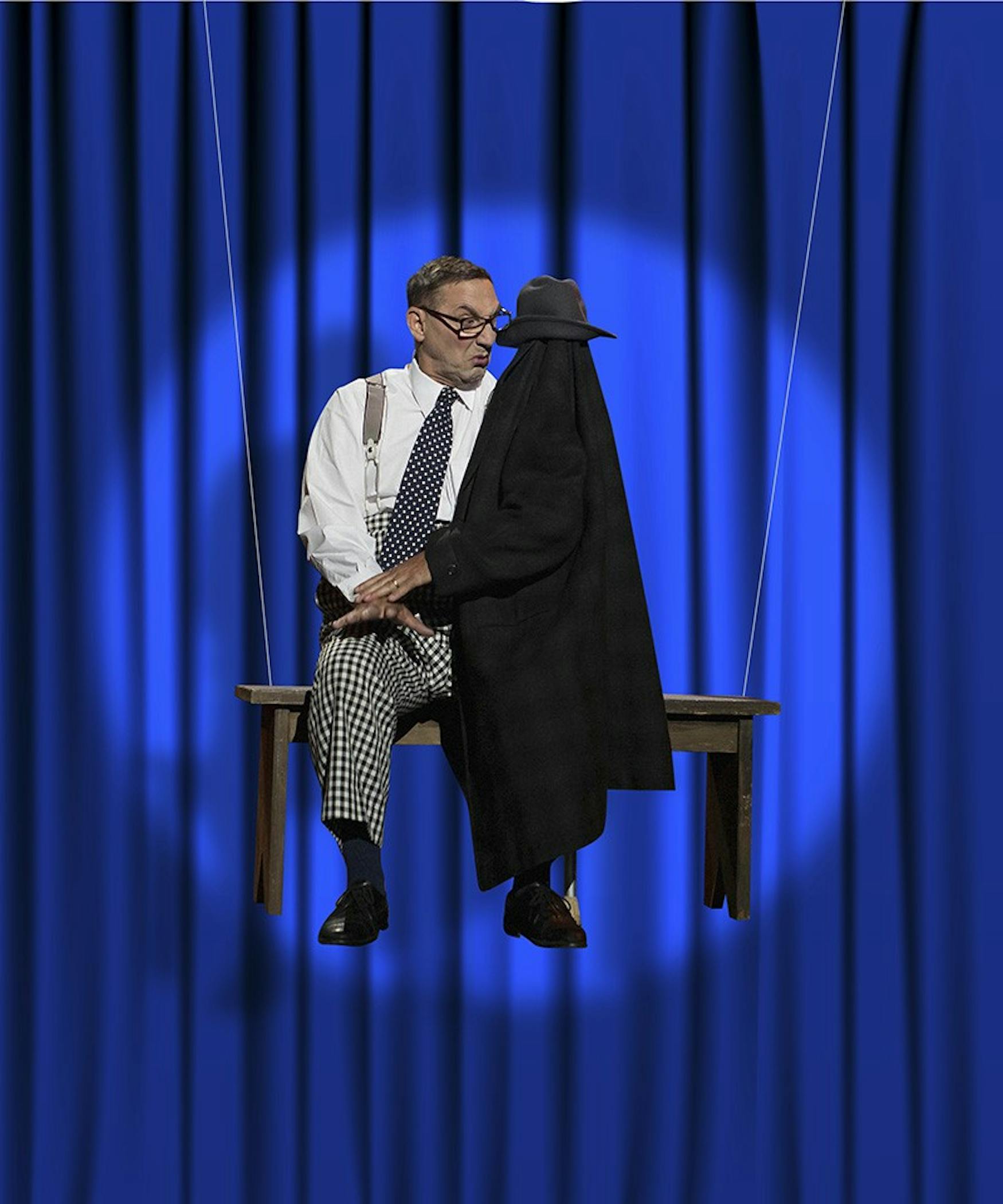Clown show incorporates creative illusions
The curtain opened on a showgirl dressed in an elaborate, sparkling, white mini-dress. As she passionately sang about the ups and downs of show business, her false breasts slowly started to comically slide down her dress.
Amy G (Amy Gordon), one of the six circus performers and comedians in A Night on the Clowns, spent the rest of her number in a simulated battle between dramatically finishing her song and arranging her false breasts. The routine immediately established the silly atmosphere that would last throughout the night.
A Night on the Clowns was presented in Spingold’s Mainstage Theater this weekend as part of the Leonard Bernstein Festival of the Arts. The performance was presented by the Brandeis Theater Company and was conceived and directed by Kenny Raskin ’74, who was also one of the performers. The differing backgrounds of the performers lent to the performance, which included routines based more on circus-like acts, those based more on comedy and those that were clever mixes of both.
Some numbers included elements typically associated with traditional clown acts. Raskin appeared in an act that was a simulation of a clown audition. The act ended with him playing “Ode to Joy” on two flutes out of his nose.
In this “audition,” Raskin was asked to present his clown credentials. In response, he offered up his clown nose, his oversized shoes and his whoopie cushion. The variety and skill within the acts that followed Raskin’s demonstrated a different brand of comedy than the typical clown acts Raskin referenced with these three props.
Kevin Brooking, a circus clown, uniquely utilized cotton candy—made fresh from a cotton candy machine on the stage—to create various items.
To finish his act, Brooking fashioned a human-like head that he placed on his own body. The head transformed Brooking into another person: he performed the rest of the scene as this cotton candy-headed person, parading around onstage with his coat over his own head to heighten the effect.
Two more clowns, Waldo & Woodhead, (Paul Burke and Woody Keppel) appeared in various juggling acts in which their characters’ friendly yet strained relationship shone through.
As the program said, “The Waldo & Woodhead show could be best described as a character-driven amalgam of theater, music, comedy and circus arts that visually demonstrates the power of cooperation between people with vastly different dispositions.”
In their first juggling act, Waldo juggled top hats by keeping two in the air and one on his head at all times, while Woodhead accompanied him with various musical instruments. Woodhead’s attempts to shift the attention to himself with his clumsiness added another layer of comedy to this trick.
In their two-person juggling act, Waldo & Woodhead frantically juggled, seemingly with the intention to just keep juggling anything they could grab inside a box between them so long as they didn’t stop juggling. In a remarkable act by Raskin, he used a crutch, a top hat, the jacket on his back and his arm to create the illusion of another person. He shared an emotional, silent conversation that involved a lot of hugging and interaction with his imaginary friend.
Through his mannerisms, Raskin truly conveyed the presence of another human, and it was almost surprising to see only one person leave the stage
Several of the acts utilized audience participation. In Randy Judkins’ juggling act, Judkins instructed the audience to say certain words in response to various juggling tricks. Amy G, while wearing rollerblades, chose an audience member to dance with her on stage.
For the finale, the comedians distributed bells throughout the audience and Raskin conducted the audience bellholders in song.
For most of the acts, each scene began with the clown taking on a new persona, adding to the theatricality of the night. The clowns brought a level of sophistication to a variety of acts that may seem by nature to be utterly absurd.



Please note All comments are eligible for publication in The Justice.